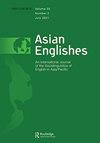Language use in English-medium instruction programs in Vietnamese higher education: From policy to practice
IF 1.8
Q1 LINGUISTICS
引用次数: 4
Abstract
ABSTRACT Premised on the theoretical approaches of language planning and policy (Spolsky, 2004, 2009; Ricento & Hornberger, 1996), this study provides a holistic examination of language use from policy to practice in Vietnamese higher education English-medium instruction (EMI) programs from multiple stakeholders’ perspectives. Specifically, this study examines how the use of languages is enacted (language management), perceived (language beliefs), and implemented (language practices) at three layers/levels involving 30 university administrators, 96 content lecturers, and 286 students (N=412). Research data were drawn from multiple sources, including policy documents, questionnaires, interviews, and classroom observations. An overarching ideology of English only as the medium of instruction was manifest in the data at all levels. However, the findings revealed a stark misalignment between the language management policies explicitly articulated at the national and institutional levels and actual language practices taking place at the interpersonal/classroom level. These findings suggest that ideology/beliefs are not the sole determinant of language practices and that the latter can sometimes be driven by contextual factors. The paper discusses the findings’ implications for EMI policies and practices and offers suggestions for future EMI-related research.越南高等教育中英语教学项目的语言使用:从政策到实践
本文章由计算机程序翻译,如有差异,请以英文原文为准。
求助全文
约1分钟内获得全文
求助全文
来源期刊

Asian Englishes
LINGUISTICS-
CiteScore
3.30
自引率
18.80%
发文量
34
期刊介绍:
Asian Englishes seeks to publish the best papers dealing with various issues involved in the diffusion of English and its diversification in Asia and the Pacific. It aims to promote better understanding of the nature of English and the role which it plays in the linguistic repertoire of those who live and work in Asia, both intra- and internationally, and in spoken and written form. The journal particularly highlights such themes as: 1.Varieties of English in Asia – Including their divergence & convergence (phonetics, phonology, prosody, vocabulary, syntax, semantics, pragmatics, discourse, rhetoric) 2.ELT and English proficiency testing vis-a-vis English variation and international use of English 3.English as a language of international and intercultural communication in Asia 4.English-language journalism, literature, and other media 5.Social roles and functions of English in Asian countries 6.Multicultural English and mutual intelligibility 7.Language policy and language planning 8.Impact of English on other Asian languages 9.English-knowing bi- and multilingualism 10.English-medium education 11.Relevance of new paradigms, such as English as a Lingua Franca, to Asian contexts. 12.The depth of penetration, use in various domains, and future direction of English in (the development of) Asian Societies.
 求助内容:
求助内容: 应助结果提醒方式:
应助结果提醒方式:


